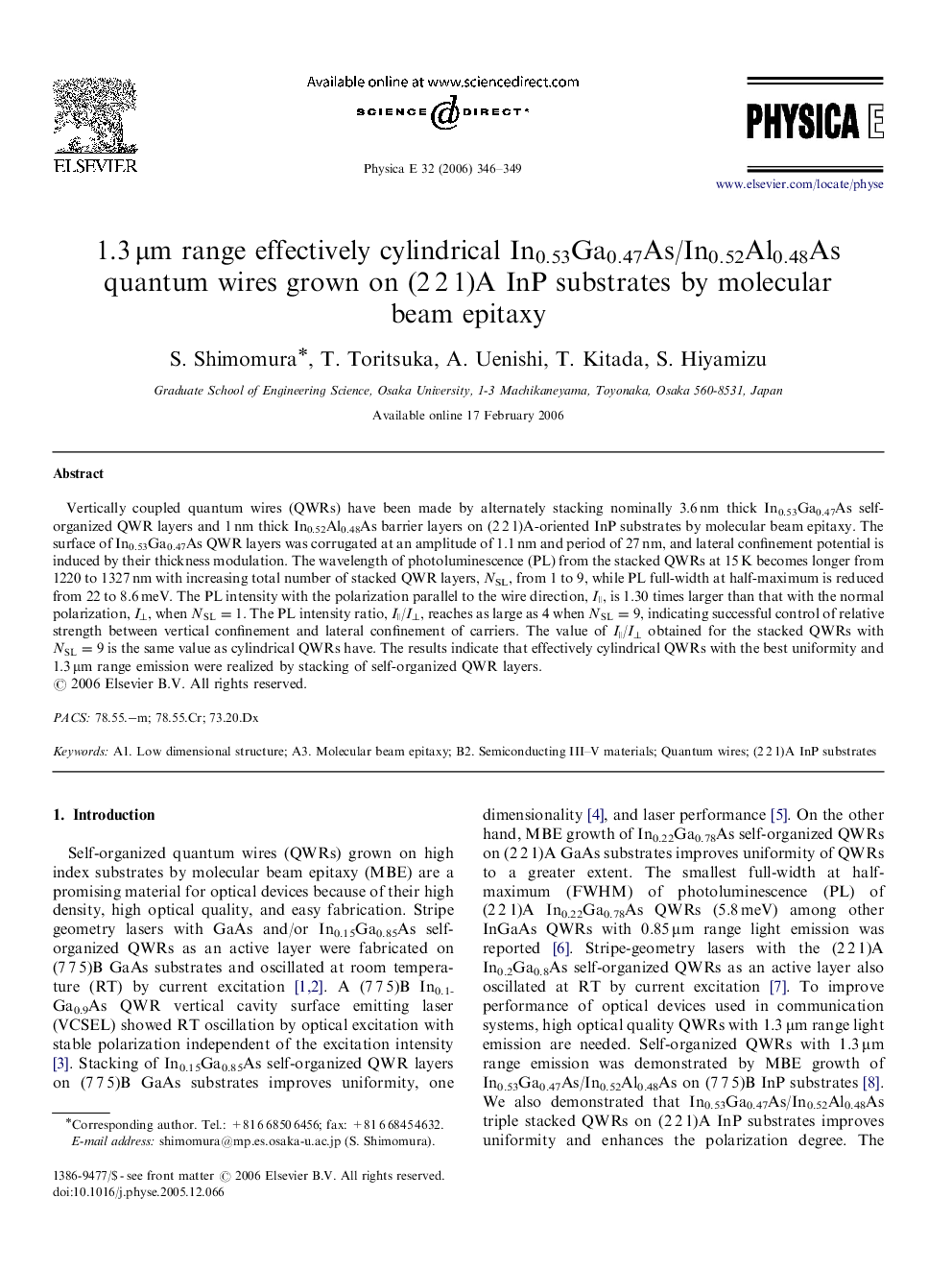| Article ID | Journal | Published Year | Pages | File Type |
|---|---|---|---|---|
| 1547997 | Physica E: Low-dimensional Systems and Nanostructures | 2006 | 4 Pages |
Abstract
Vertically coupled quantum wires (QWRs) have been made by alternately stacking nominally 3.6 nm thick In0.53Ga0.47As self-organized QWR layers and 1 nm thick In0.52Al0.48As barrier layers on (2 2 1)A-oriented InP substrates by molecular beam epitaxy. The surface of In0.53Ga0.47As QWR layers was corrugated at an amplitude of 1.1 nm and period of 27 nm, and lateral confinement potential is induced by their thickness modulation. The wavelength of photoluminescence (PL) from the stacked QWRs at 15 K becomes longer from 1220 to 1327 nm with increasing total number of stacked QWR layers, NSL, from 1 to 9, while PL full-width at half-maximum is reduced from 22 to 8.6 meV. The PL intensity with the polarization parallel to the wire direction, Iâ¥, is 1.30 times larger than that with the normal polarization, Iâ¥, when NSL=1. The PL intensity ratio, Iâ¥/Iâ¥, reaches as large as 4 when NSL=9, indicating successful control of relative strength between vertical confinement and lateral confinement of carriers. The value of Iâ¥/I⥠obtained for the stacked QWRs with NSL=9 is the same value as cylindrical QWRs have. The results indicate that effectively cylindrical QWRs with the best uniformity and 1.3 μm range emission were realized by stacking of self-organized QWR layers.
Keywords
Related Topics
Physical Sciences and Engineering
Materials Science
Electronic, Optical and Magnetic Materials
Authors
S. Shimomura, T. Toritsuka, A. Uenishi, T. Kitada, S. Hiyamizu,
